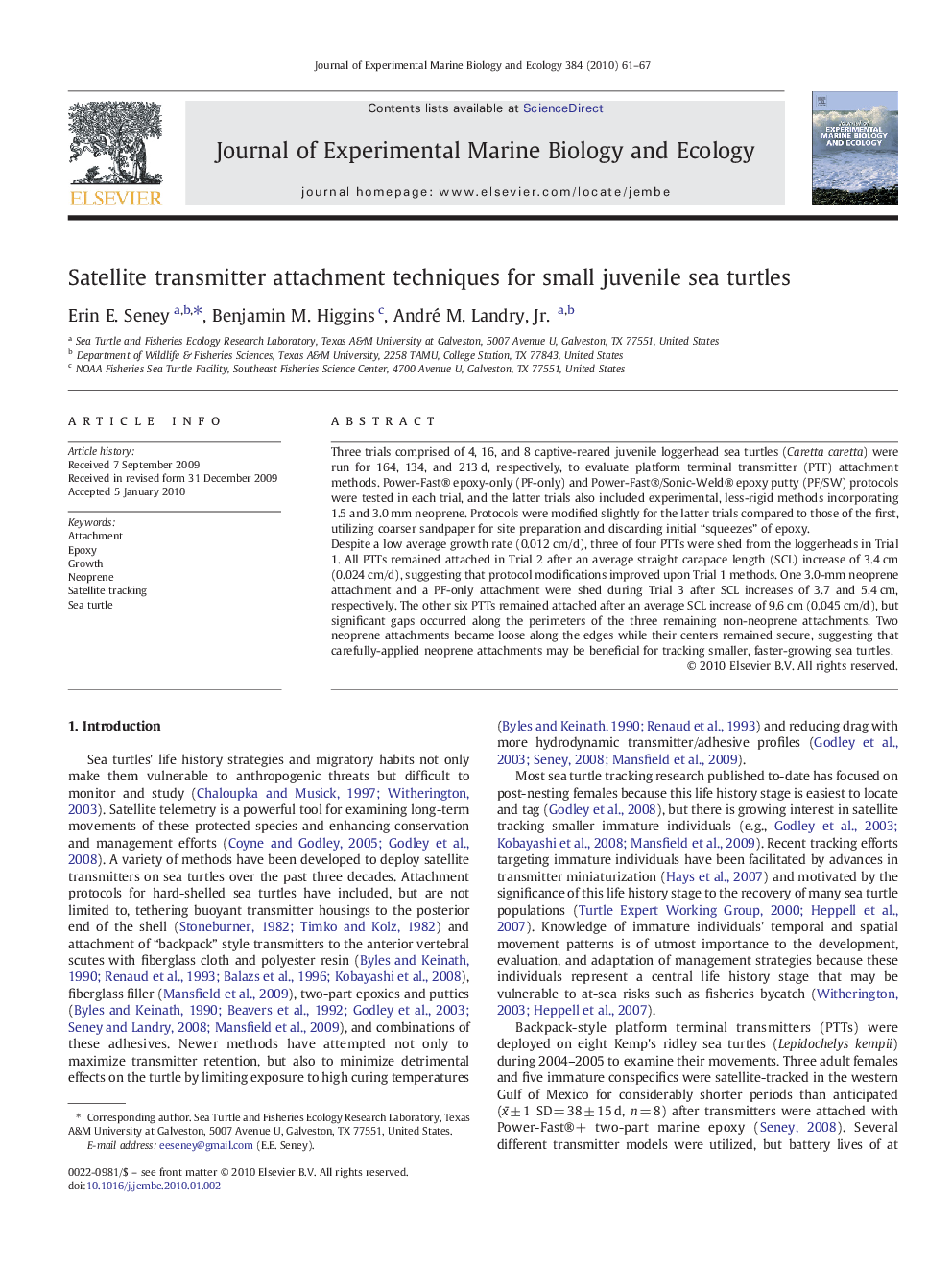| Article ID | Journal | Published Year | Pages | File Type |
|---|---|---|---|---|
| 4396642 | Journal of Experimental Marine Biology and Ecology | 2010 | 7 Pages |
Three trials comprised of 4, 16, and 8 captive-reared juvenile loggerhead sea turtles (Caretta caretta) were run for 164, 134, and 213 d, respectively, to evaluate platform terminal transmitter (PTT) attachment methods. Power-Fast® epoxy-only (PF-only) and Power-Fast®/Sonic-Weld® epoxy putty (PF/SW) protocols were tested in each trial, and the latter trials also included experimental, less-rigid methods incorporating 1.5 and 3.0 mm neoprene. Protocols were modified slightly for the latter trials compared to those of the first, utilizing coarser sandpaper for site preparation and discarding initial “squeezes” of epoxy.Despite a low average growth rate (0.012 cm/d), three of four PTTs were shed from the loggerheads in Trial 1. All PTTs remained attached in Trial 2 after an average straight carapace length (SCL) increase of 3.4 cm (0.024 cm/d), suggesting that protocol modifications improved upon Trial 1 methods. One 3.0-mm neoprene attachment and a PF-only attachment were shed during Trial 3 after SCL increases of 3.7 and 5.4 cm, respectively. The other six PTTs remained attached after an average SCL increase of 9.6 cm (0.045 cm/d), but significant gaps occurred along the perimeters of the three remaining non-neoprene attachments. Two neoprene attachments became loose along the edges while their centers remained secure, suggesting that carefully-applied neoprene attachments may be beneficial for tracking smaller, faster-growing sea turtles.
